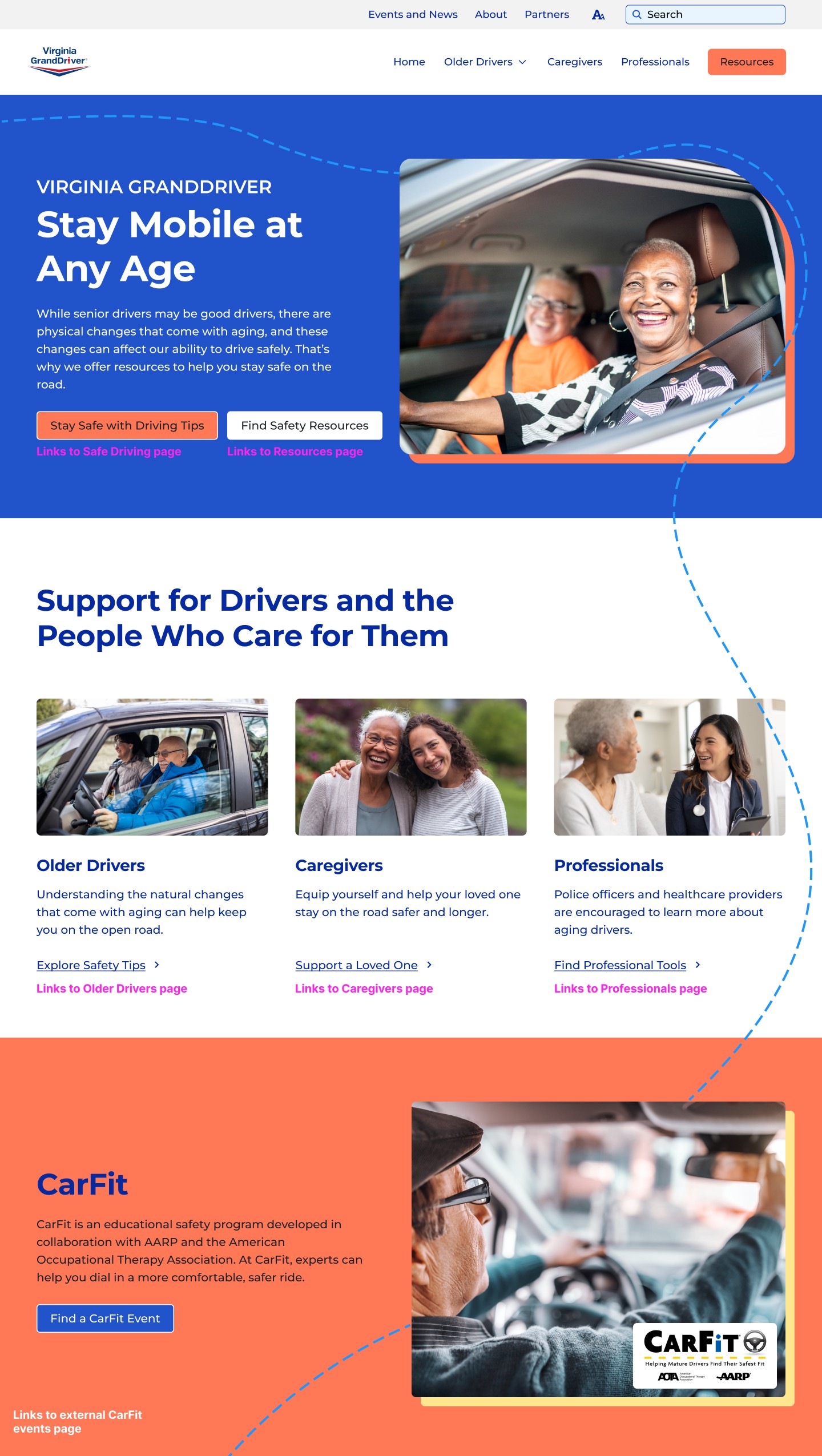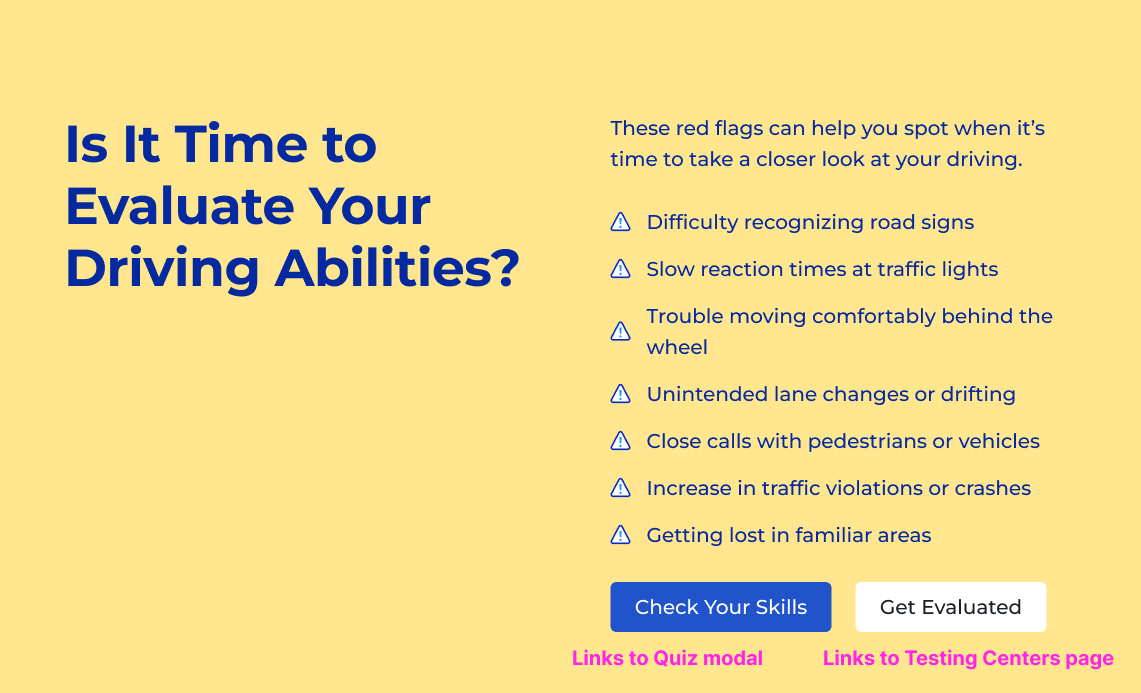Virginia GrandDriver
Virginia GrandDriver is a program that helps older drivers access resources for safer driving, while also supporting caregivers and professionals with tools to guide difficult conversations and share information. I redesigned redesign this 23-page site, creating an accessible and intuitive experience that prioritized older adults while still serving secondary audiences.
Project Overview
The Challenge
Although the existing Virginia GrandDriver website performed fairly well, the user journey was scattered and lacked a clear path for different audiences. Older drivers, the primary audience, often struggled to find straightforward resources on safe driving and transportation alternatives. Caregivers, the secondary audience, had no guided way to access tools for difficult conversations, and professionals such as doctors and law enforcement faced similar challenges in locating shareable resources. The redesign needed to create intuitive pathways for each audience while maintaining ADA compliance and delivering within tight timelines.
The Process
Discovery
I began by reviewing analytics, client briefs, and the existing site to identify pain points and content gaps. From there, I developed personas for the three audience groups: older drivers (primary), caregivers (secondary), and professionals (tertiary). Mapping user journeys and flowcharts revealed opportunities to simplify content for older adults while structuring resources so caregivers and professionals could quickly find what they needed.


Design
Using Figma, I built wireframes that restructured navigation and emphasized clear, readable content for older drivers. These were refined into high-fidelity mockups that ensured ADA/508 compliance, mobile responsiveness, and logical pathways for caregivers and professionals. I presented both low- and high-fidelity designs to the client, incorporating feedback iteratively at each stage.
Delivery
Once development is complete, I will do QA/QC by reviewing every page against the design files, documenting inconsistencies, and checking for ADA/508 compliance. This final stage will ensure the site launches with a clear, consistent, and accessible experience for all three audiences.

The Solution
The solution for Virginia GrandDriver was to simplify navigation and reduce the loops where users could get stuck, creating a clear and direct experience for older adults. By designing mobile-first, we prioritized larger touch targets and introduced an accessibility feature that allows users to adjust text size. The content was framed to support older drivers with resources and options rather than making them feel like driving was being taken away. Caregivers and professionals were also considered, with pathways designed to give them tools and guidance to better support their communities.
The Outcome
This was the largest website PRR had redesigned, and it gave me valuable experience designing with older adults as the primary audience. While accessibility is always a priority, every decision here carried additional nuance, from text size and navigation to how we framed sensitive content around driving and independence. Driving is closely tied to freedom, and the challenge was to shift the conversation from ‘losing independence’ to ‘staying safe for yourself and others.’ The site is currently in development, and I look forward to seeing how it supports users and the results it achieves once launched.


